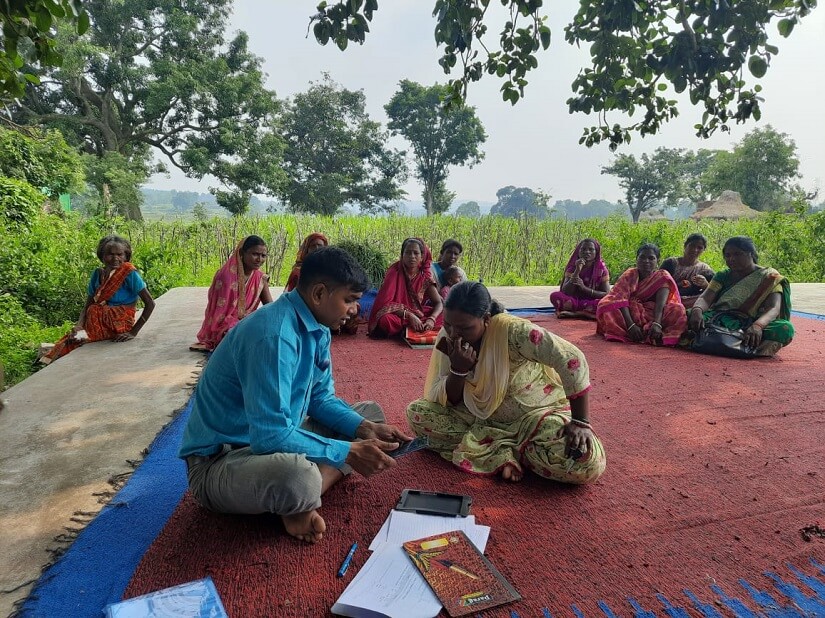Reading Before Signing It: Know Your Consent Forms

Before using any app today, one must read the terms and conditions before moving on to use it. Most of us just check the box that allows us to move forward and get on with our day. But that little checkbox gives your consent to use your information as per the organization’s terms. Reading the fine prints on such agreements can be a hassle for anyone unfamiliar with the jargon unless someone breaks it down for them in an easy and accessible language.
Equally, if not more important, are the agreements signed by respondents before participating in a survey. These agreements define elements that inform the research and survey process and are read out to the respondents by the enumerators in a detailed, informed manner.
But why do they need to be read out? What is so important about these agreements?
In this blog, we will discuss just how beneficial survey agreements are in protecting the respondent and ensuring their best interests!
What a Participant Agrees to When They Sign a Consent Form
Consent constitutes a critical foundation in the process of data collection. The respondent must feel protected, respected, and comforted by the judicious use of their information. It means that their choice matters and their voice is heard. Survey agreements represent the base for the establishment of informed consent. Agreements also allow them to share honest opinions and feedback in a non-exploitative process where the sole aim is to collect data.
What are the components of an informed, well-made agreement and how does it protect the respondents?
- Detailed information about the interviewer and the research
While technology has made immense progress in making surveying easier and quicker for most of us, it still lacks the sense of faith and transparency that human interaction ensures. This is why an introduction from the enumerator helps establish a sense of trust in the respondents. It also gives them the chance to understand the organization collecting the information.
- Objectives of the survey and study
This section defines exactly what the survey is being conducted for, enabling the respondent to make an informed decision. Knowing the purpose of the study also affects the responses given. Here, the enumerator asks for the respondent’s participation clearly and asks for their permission to conduct the survey.
- Participation criteria and how the research is helpful to them
Next, the enumerator explains the selection procedure of the sample and tells them why the respondent was invited to participate in the survey.
Central to the agreement’s purpose is informing the respondent that participation in the study is entirely voluntary. Requirements for the study, such as the time it will take to complete the survey and the kind of questions asked, are explained next.
The respondent signs the agreement once all the questions are answered. So, they have control over the data that is being used for the study. They are also informed of the medium used for entering their answers to ensure maximum comfort and safety for the respondent.
- Consequences of participation in the study
Part of protecting a respondent is to inform them about the potential discomfort of participating in a survey. The enumerator explains the confidentiality of the collected data and establishes that no one other than researchers involved in the process will have access to their information.
To ensure maximum comfort for the respondent, the survey is conducted privately so they can speak freely. The enumerator also explains all COVID-19 preventative measures for the interview.
- Compensation
If we consider a survey that promises monetary compensation or benefit, the credibility of collected data may be compromised, especially if a programme beneficiary’s opinion about the programme is sought. For such feedback surveys, any form of compensation induces bias and leads to unreliable data. Many use the promise of merchandise items like mugs, tumblers, or clothing items in exchange for insights during market research.
This factor, then, is sector-specific, but agreements for social research involve no monetary compensation. In surveys conducted for data that will potentially inform the policymaking process, the data must be completely unbiased and should reflect the honest opinion of the respondent. This is why the enumerator informs the participant about the absence of any compensation, monetary or otherwise.
- Confidentiality procedures
In this section, the participant is told how their privacy and confidentiality will be maintained. Such privacy measures make sure that their name and any other identifying information is only accessible to the researchers and that it will never appear in any published material.
For increased privacy, the respondent’s personal contact details are also deleted at the end of the study. This is especially significant in sensitive surveys and must be enforced to avoid the negative effects upon the respondent if their identity is revealed.
- Voluntary participation
Towards the end of the agreement, confirmation of the participant’s consent is sought again. They are also reassured that there will be no consequences if they choose not to participate or stop at any point.
The agreement ends with the provision of the lead researcher’s contact information for the respondent to contact in case of any questions. And once again, their consent is sought.

How to Make a Consent Form Even More Accessible
For respondents who cannot read, the enumerator must read it aloud for greater understanding and clarity. In addition, it also invites questions and clarifications from the participant since the tone is conversational.
Communicating with the respondent in a language comfortable for them helps achieve maximum accessibility and enables greater understanding of the consent form. The enumerator must check if the participant is able to follow the agreement and clear any questions they may have.
Method of Seeking Consent Varies as per the Situation
There exist a multitude of situations where different kind of consent is sought. For example:
- Consent from minor participants
A parent or a guardian must give consent on the minor’s behalf. Whoever provides the consent for the minor’s participation, their presence during the survey is recommended to ensure maximum comfort for the participant.
- Consent to publish photographic/videographic material
In cases where photographs become part of the surveying process, participants need to be asked about it, seeking their approval and ensuring their comfort with their photographs being published for editorial or advertising purposes to promote the organization’s activities. Verbal consent is valid in case no signature has been provided for the same.
The sole purpose of conducting any survey is to collect reliable data that gives valuable insight to eventually affect policies for millions. Reliability can only be ensured if all ethical and moral standards of conducting a survey are followed and replicated across all stages of the process. Thus, reading the fine print on jargon-y documents may not be easy but now, you know what a survey agreement will ask you before collecting data!
Aishwarya Bhatia

